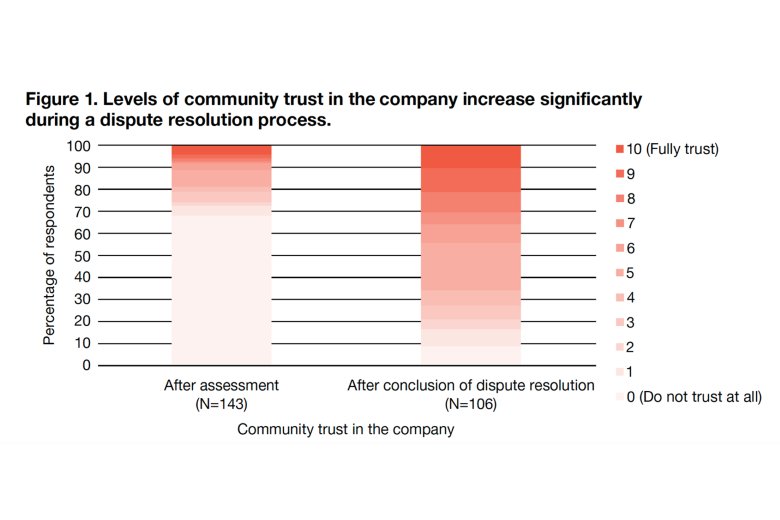By Rabi Thapa
When things go wrong in projects supported by a development finance organization, there’s often more than one way to put them right. A new advisory note by the Office of the Compliance Advisor Ombudsman (CAO) explores how the process of dispute resolution can support remedy – quickly, effectively, and in a way that directly benefits complainants.
The note by the CAO – the independent accountability mechanism for the International Finance Corporation and the Multilateral Investment Guarantee Agency (IFC/MIGA) – begins by defining remedy as constituting more than material outcomes such as financial compensation.
It says that remedy should also help “restore the dignity of complainants and increase levels of trust between the project-affected people and the concerned companies.” This notion of “making whole” those who have been harmed by clients of development finance institutions is crucial to the entire process of accountability, not to mention the success of projects, according to the note, titled “Insights on Remedy: The Role of Dispute Resolution in Remedy.”
Dispute resolution can increase trust
The advisory note, released in February, found that the process of dispute resolution can make a clear contribution to remedy. The note is the first of a series of papers meant to inform the development of IFC/MIGA’s remedial action framework, currently undergoing public consultation.
“We asked communities, ‘How much do you trust the company?’, before and after our dispute resolution process, and saw a massive increase in trust levels,” said Julia Gallu, lead author of the report and Head of Advisory at the CAO (see graphic below). “The aspect of remedy that’s to do with respect and restoration of dignity and engagement is so important – it’s not enough for experts sitting in Washington, D.C., to say ‘Ok, we’ve looked at the harm and here’s our table of remedies,’ without engaging with the community.”
There is a strong argument, therefore, for potential harm to be addressed at an earlier stage – before trust levels have broken down, and while development finance institutions are actively involved in the project and able to exert leverage on their clients.

